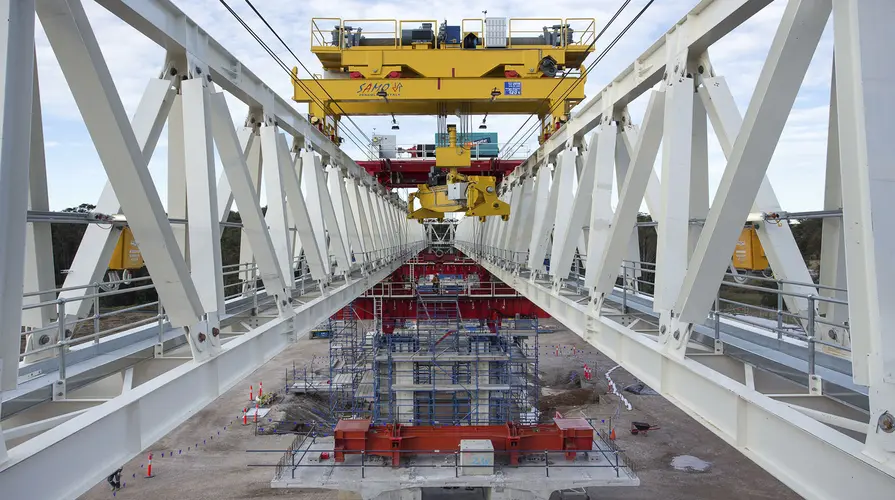Skytrain update
20.01.2017

The skytrain section damaged during construction in mid-September near the corner of Windsor and Old Windsor roads at Kellyville has been removed and will soon be replaced.
An independent investigation commissioned by Transport for NSW has found that a series of events at the construction site combined to cause the damage, with additional controls subsequently put in place to improve the process.
The report found the damage was caused by:
- Insufficient temporary clamping pressure during the “stitch join” construction process used to join two concrete segments which form the skytrain deck. As the structure cooled overnight, the segments pulled apart and the stitch join cracked
- The strength of the concrete used on-site in the stitch join
- The process and type of epoxy used to fix cracking in this concrete join.
These factors individually would not have caused a section to be damaged. The damage was caused because of the process used to join the two concrete segments on-site, and is not related to the concrete segments themselves or their manufacture.
Transport for NSW can confirm no other skytrain section has been affected in this way.
The skytrain is structurally sound, with this scenario limited to one span. Transport for NSW inspects, audits and reviews the construction process.
The skytrain, which will run for 4 kilometres from Bella Vista to Rouse Hill, is essentially a series of 115 independent bridges linked together to form Australia’s longest bridge on which a train will run every four minutes in each direction in the peak.
Already, 98 of these 115 bridges have been completed and inspections have confirmed they are structurally sound.
The individual skytrain bridges are under the greatest stress they will ever experience during the construction phase, after which time the stress lowers in the structure. This means the skytrain sections that are already in place have safely passed through the period of greatest stress.
Following the recommendations in the report, a number of changes to the construction processes will be made. This includes increased clamping during construction of stitch joins, increasing concrete curing times for stitch joins to ensure the strength is more than sufficient as well as excluding the use of epoxy in stitch joins between concrete segments.
Further information – January 20:
Safety is the Number 1 priority on Sydney Metro.
All work that has happened on the skytrain over public roads has been with Roads and Maritime Services’ authorisation to ensure that safety and compliance measures are in place.
Independent certifier Arcadis has certified – and continues to certify – completed sections of the skytrain in accordance with the requirements set out in the relevant contracts.
Given the complexity of delivering the skytrain above a community and next to a major road that carries more than 50,000 vehicles a day, the Sydney Metro Delivery Office has been working collaboratively with all stakeholders for more than two years to achieve the best outcome for the people of Sydney’s North West.
The skytrain structure over public roads is regularly inspected by Transport for NSW as part of the ongoing construction and quality assurance process.
An independent investigation commissioned by Transport for NSW has found that a series of events at the construction site combined to cause the damage, with additional controls subsequently put in place to improve the process.
The report was released publicly in December and is available on the Sydney Metro website.